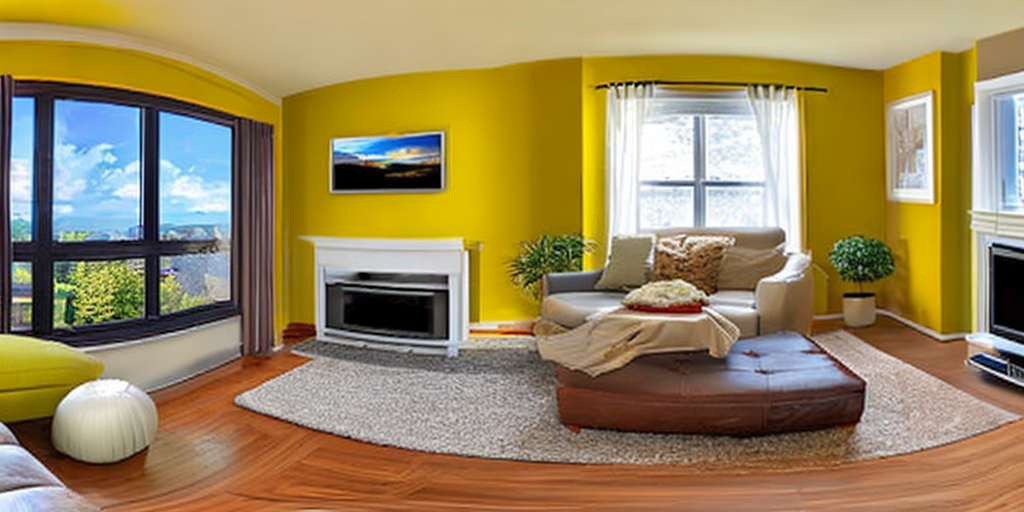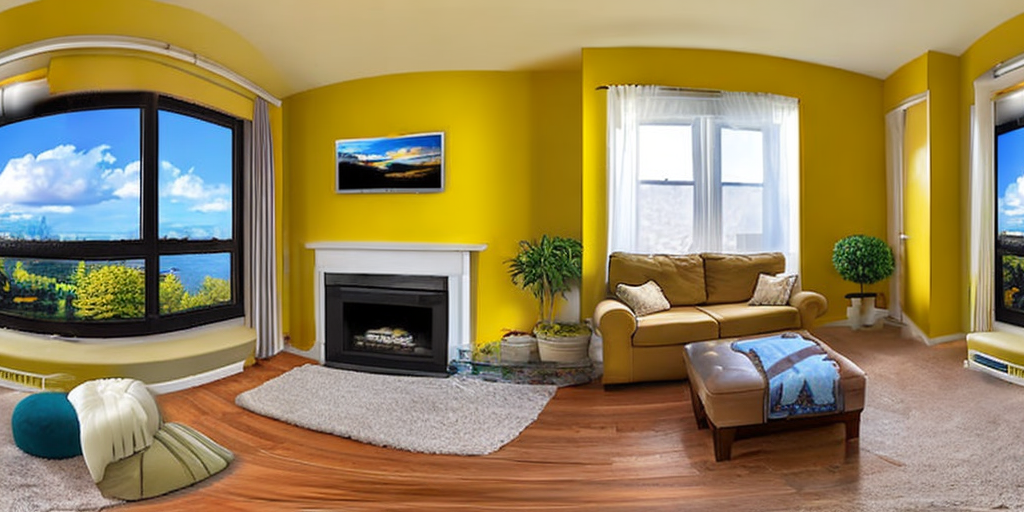Diffusers documentation
MultiDiffusion
MultiDiffusion
MultiDiffusion: Fusing Diffusion Paths for Controlled Image Generation is by Omer Bar-Tal, Lior Yariv, Yaron Lipman, and Tali Dekel.
The abstract from the paper is:
Recent advances in text-to-image generation with diffusion models present transformative capabilities in image quality. However, user controllability of the generated image, and fast adaptation to new tasks still remains an open challenge, currently mostly addressed by costly and long re-training and fine-tuning or ad-hoc adaptations to specific image generation tasks. In this work, we present MultiDiffusion, a unified framework that enables versatile and controllable image generation, using a pre-trained text-to-image diffusion model, without any further training or finetuning. At the center of our approach is a new generation process, based on an optimization task that binds together multiple diffusion generation processes with a shared set of parameters or constraints. We show that MultiDiffusion can be readily applied to generate high quality and diverse images that adhere to user-provided controls, such as desired aspect ratio (e.g., panorama), and spatial guiding signals, ranging from tight segmentation masks to bounding boxes.
You can find additional information about MultiDiffusion on the project page, original codebase, and try it out in a demo.
Tips
While calling StableDiffusionPanoramaPipeline, it’s possible to specify the view_batch_size parameter to be > 1.
For some GPUs with high performance, this can speedup the generation process and increase VRAM usage.
To generate panorama-like images make sure you pass the width parameter accordingly. We recommend a width value of 2048 which is the default.
Circular padding is applied to ensure there are no stitching artifacts when working with
panoramas to ensure a seamless transition from the rightmost part to the leftmost part.
By enabling circular padding (set circular_padding=True), the operation applies additional
crops after the rightmost point of the image, allowing the model to “see” the transition
from the rightmost part to the leftmost part. This helps maintain visual consistency in
a 360-degree sense and creates a proper “panorama” that can be viewed using 360-degree
panorama viewers. When decoding latents in Stable Diffusion, circular padding is applied
to ensure that the decoded latents match in the RGB space.
For example, without circular padding, there is a stitching artifact (default):

But with circular padding, the right and the left parts are matching (circular_padding=True):

Make sure to check out the Schedulers guide to learn how to explore the tradeoff between scheduler speed and quality, and see the reuse components across pipelines section to learn how to efficiently load the same components into multiple pipelines.
StableDiffusionPanoramaPipeline
class diffusers.StableDiffusionPanoramaPipeline
< source >( vae: AutoencoderKL text_encoder: CLIPTextModel tokenizer: CLIPTokenizer unet: UNet2DConditionModel scheduler: DDIMScheduler safety_checker: StableDiffusionSafetyChecker feature_extractor: CLIPImageProcessor requires_safety_checker: bool = True )
Parameters
- vae (AutoencoderKL) — Variational Auto-Encoder (VAE) model to encode and decode images to and from latent representations.
- text_encoder (CLIPTextModel) — Frozen text-encoder (clip-vit-large-patch14).
- tokenizer (CLIPTokenizer) —
A
CLIPTokenizerto tokenize text. - unet (UNet2DConditionModel) —
A
UNet2DConditionModelto denoise the encoded image latents. - scheduler (SchedulerMixin) —
A scheduler to be used in combination with
unetto denoise the encoded image latents. Can be one of DDIMScheduler, LMSDiscreteScheduler, or PNDMScheduler. - safety_checker (
StableDiffusionSafetyChecker) — Classification module that estimates whether generated images could be considered offensive or harmful. Please refer to the model card for more details about a model’s potential harms. - feature_extractor (CLIPImageProcessor) —
A
CLIPImageProcessorto extract features from generated images; used as inputs to thesafety_checker.
Pipeline for text-to-image generation using MultiDiffusion.
This model inherits from DiffusionPipeline. Check the superclass documentation for the generic methods implemented for all pipelines (downloading, saving, running on a particular device, etc.).
__call__
< source >( prompt: typing.Union[str, typing.List[str]] = None height: typing.Optional[int] = 512 width: typing.Optional[int] = 2048 num_inference_steps: int = 50 guidance_scale: float = 7.5 view_batch_size: int = 1 negative_prompt: typing.Union[typing.List[str], str, NoneType] = None num_images_per_prompt: typing.Optional[int] = 1 eta: float = 0.0 generator: typing.Union[torch._C.Generator, typing.List[torch._C.Generator], NoneType] = None latents: typing.Optional[torch.FloatTensor] = None prompt_embeds: typing.Optional[torch.FloatTensor] = None negative_prompt_embeds: typing.Optional[torch.FloatTensor] = None output_type: typing.Optional[str] = 'pil' return_dict: bool = True callback: typing.Union[typing.Callable[[int, int, torch.FloatTensor], NoneType], NoneType] = None callback_steps: typing.Optional[int] = 1 cross_attention_kwargs: typing.Union[typing.Dict[str, typing.Any], NoneType] = None circular_padding: bool = False clip_skip: typing.Optional[int] = None ) → StableDiffusionPipelineOutput or tuple
Parameters
- prompt (
strorList[str], optional) — The prompt or prompts to guide image generation. If not defined, you need to passprompt_embeds. - height (
int, optional, defaults to 512) — The height in pixels of the generated image. - width (
int, optional, defaults to 2048) — The width in pixels of the generated image. The width is kept high because the pipeline is supposed generate panorama-like images. - num_inference_steps (
int, optional, defaults to 50) — The number of denoising steps. More denoising steps usually lead to a higher quality image at the expense of slower inference. - guidance_scale (
float, optional, defaults to 7.5) — A higher guidance scale value encourages the model to generate images closely linked to the textpromptat the expense of lower image quality. Guidance scale is enabled whenguidance_scale > 1. - view_batch_size (
int, optional, defaults to 1) — The batch size to denoise split views. For some GPUs with high performance, higher view batch size can speedup the generation and increase the VRAM usage. - negative_prompt (
strorList[str], optional) — The prompt or prompts to guide what to not include in image generation. If not defined, you need to passnegative_prompt_embedsinstead. Ignored when not using guidance (guidance_scale < 1). - num_images_per_prompt (
int, optional, defaults to 1) — The number of images to generate per prompt. - eta (
float, optional, defaults to 0.0) — Corresponds to parameter eta (η) from the DDIM paper. Only applies to the DDIMScheduler, and is ignored in other schedulers. - generator (
torch.GeneratororList[torch.Generator], optional) — Atorch.Generatorto make generation deterministic. - latents (
torch.FloatTensor, optional) — Pre-generated noisy latents sampled from a Gaussian distribution, to be used as inputs for image generation. Can be used to tweak the same generation with different prompts. If not provided, a latents tensor is generated by sampling using the supplied randomgenerator. - prompt_embeds (
torch.FloatTensor, optional) — Pre-generated text embeddings. Can be used to easily tweak text inputs (prompt weighting). If not provided, text embeddings are generated from thepromptinput argument. - negative_prompt_embeds (
torch.FloatTensor, optional) — Pre-generated negative text embeddings. Can be used to easily tweak text inputs (prompt weighting). If not provided,negative_prompt_embedsare generated from thenegative_promptinput argument. - output_type (
str, optional, defaults to"pil") — The output format of the generated image. Choose betweenPIL.Imageornp.array. - return_dict (
bool, optional, defaults toTrue) — Whether or not to return a StableDiffusionPipelineOutput instead of a plain tuple. - callback (
Callable, optional) — A function that calls everycallback_stepssteps during inference. The function is called with the following arguments:callback(step: int, timestep: int, latents: torch.FloatTensor). - callback_steps (
int, optional, defaults to 1) — The frequency at which thecallbackfunction is called. If not specified, the callback is called at every step. - cross_attention_kwargs (
dict, optional) — A kwargs dictionary that if specified is passed along to theAttentionProcessoras defined underself.processorin diffusers.models.attention_processor. - circular_padding (
bool, optional, defaults toFalse) — If set toTrue, circular padding is applied to ensure there are no stitching artifacts. Circular padding allows the model to seamlessly generate a transition from the rightmost part of the image to the leftmost part, maintaining consistency in a 360-degree sense. - clip_skip (
int, optional) — Number of layers to be skipped from CLIP while computing the prompt embeddings. A value of 1 means that the output of the pre-final layer will be used for computing the prompt embeddings.
Returns
StableDiffusionPipelineOutput or tuple
If return_dict is True, StableDiffusionPipelineOutput is returned,
otherwise a tuple is returned where the first element is a list with the generated images and the
second element is a list of bools indicating whether the corresponding generated image contains
“not-safe-for-work” (nsfw) content.
The call function to the pipeline for generation.
Examples:
>>> import torch
>>> from diffusers import StableDiffusionPanoramaPipeline, DDIMScheduler
>>> model_ckpt = "stabilityai/stable-diffusion-2-base"
>>> scheduler = DDIMScheduler.from_pretrained(model_ckpt, subfolder="scheduler")
>>> pipe = StableDiffusionPanoramaPipeline.from_pretrained(
... model_ckpt, scheduler=scheduler, torch_dtype=torch.float16
... )
>>> pipe = pipe.to("cuda")
>>> prompt = "a photo of the dolomites"
>>> image = pipe(prompt).images[0]Disable sliced VAE decoding. If enable_vae_slicing was previously enabled, this method will go back to
computing decoding in one step.
Enable sliced VAE decoding. When this option is enabled, the VAE will split the input tensor in slices to compute decoding in several steps. This is useful to save some memory and allow larger batch sizes.
encode_prompt
< source >( prompt device num_images_per_prompt do_classifier_free_guidance negative_prompt = None prompt_embeds: typing.Optional[torch.FloatTensor] = None negative_prompt_embeds: typing.Optional[torch.FloatTensor] = None lora_scale: typing.Optional[float] = None clip_skip: typing.Optional[int] = None )
Parameters
- prompt (
strorList[str], optional) — prompt to be encoded device — (torch.device): torch device - num_images_per_prompt (
int) — number of images that should be generated per prompt - do_classifier_free_guidance (
bool) — whether to use classifier free guidance or not - negative_prompt (
strorList[str], optional) — The prompt or prompts not to guide the image generation. If not defined, one has to passnegative_prompt_embedsinstead. Ignored when not using guidance (i.e., ignored ifguidance_scaleis less than1). - prompt_embeds (
torch.FloatTensor, optional) — Pre-generated text embeddings. Can be used to easily tweak text inputs, e.g. prompt weighting. If not provided, text embeddings will be generated frompromptinput argument. - negative_prompt_embeds (
torch.FloatTensor, optional) — Pre-generated negative text embeddings. Can be used to easily tweak text inputs, e.g. prompt weighting. If not provided, negative_prompt_embeds will be generated fromnegative_promptinput argument. - lora_scale (
float, optional) — A LoRA scale that will be applied to all LoRA layers of the text encoder if LoRA layers are loaded. - clip_skip (
int, optional) — Number of layers to be skipped from CLIP while computing the prompt embeddings. A value of 1 means that the output of the pre-final layer will be used for computing the prompt embeddings.
Encodes the prompt into text encoder hidden states.
StableDiffusionPipelineOutput
class diffusers.pipelines.stable_diffusion.StableDiffusionPipelineOutput
< source >( images: typing.Union[typing.List[PIL.Image.Image], numpy.ndarray] nsfw_content_detected: typing.Optional[typing.List[bool]] )
Parameters
- images (
List[PIL.Image.Image]ornp.ndarray) — List of denoised PIL images of lengthbatch_sizeor NumPy array of shape(batch_size, height, width, num_channels). - nsfw_content_detected (
List[bool]) — List indicating whether the corresponding generated image contains “not-safe-for-work” (nsfw) content orNoneif safety checking could not be performed.
Output class for Stable Diffusion pipelines.